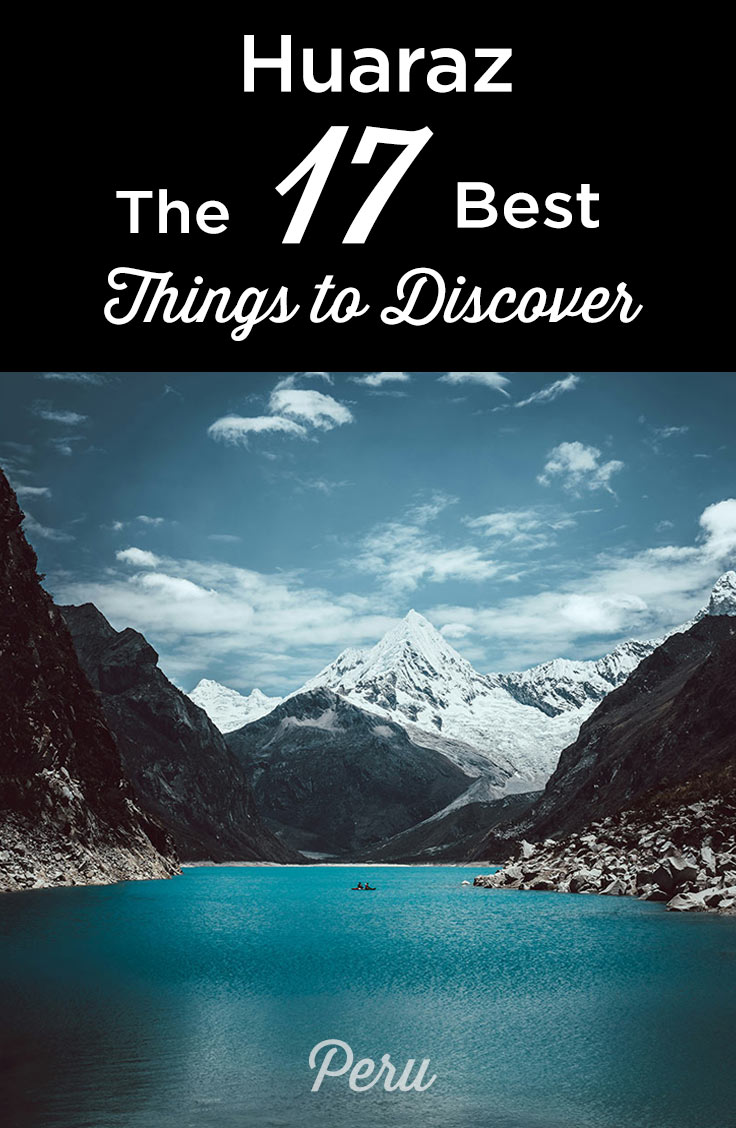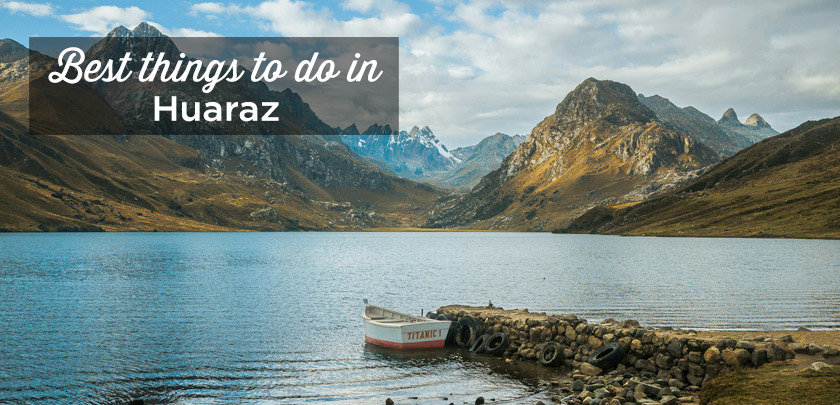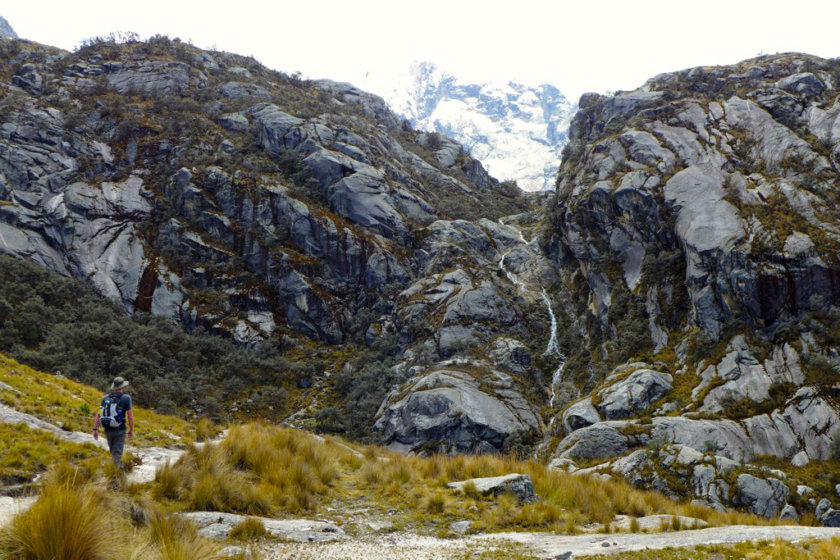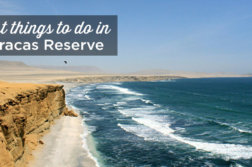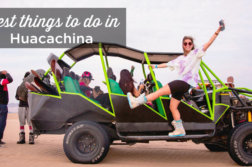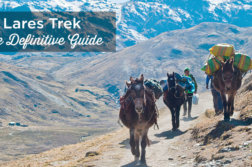All Best Places to Visit in Huaraz: Lakes, Treks, and Unmissable Sights
Huaraz is a paradise for outdoor enthusiasts in Peru, known for its breathtaking hikes, dramatic landscapes, and world-class trekking routes.
Often overlooked by travelers following the classic 2-week Peru itinerary, this region in the heart of the northern Peruvian Andes remains one of the country’s best-kept secrets.
If you love nature, mountains, and challenging adventures, Huaraz is one place you don’t want to miss.
In this guide, you’ll find the top things to do in Huaraz—including essential acclimatization hikes, day trips, and legendary multi-day treks.
I’ve also included key travel tips, practical info, and my personal recommendations on the best places to stay in Huaraz to help you make the most of your trip.
Sommaire
- All Best Places to Visit in Huaraz: Lakes, Treks, and Unmissable Sights
- Acclimatization hikes
- The treks of several days
- Entrance to Huascaran National Park
- My last tip for Huaraz: the summary
- Where to stay in Huaraz?
- What is the weather like in Huaraz?
- When to go to Huaraz?
- How long to visit Huaraz?
- What to bring to Huaraz?
- How to get to Huaraz?
- How to get from Lima to Huaraz by car?
- Do you want to rent a car in Peru?
- Book Your Flight at the Best Price
- Traveling to Peru? These articles will help you!
1. The city of Huaraz
Located at an altitude of 10,100 feet in the Andes, Huaraz is the capital of the region of the same name, in the province of Ancash.
In fact, there is not much to do in the city and its main interest is to be the starting point of all excursions.
But since you will have to pass through there, it is better to take advantage of it!
What to do in the city of Huaraz:
- The Plaza de Armas: is the central square of Huaraz, where the cathedral, the Sagrario San Sebastian, the tourist office and the archaeology museum are located.
- The Ancash Archaeological Museum: presents the historical and cultural development of the Ancash region, from 10,500 B.C. to the 16th century. There are Chavin, Huaraz, Mochica, Recuay and Inca artifacts. Its garden is a must visit with its 140 monoliths. From Tuesday to Sunday from 9:00 to 17:00 hours. Admission 7 soles.
- The Sanctuary of the Lord of Solitude is a beautiful church located in the Plaza de la Soledad.
- Visit the Central Market where you can see the local life, all kinds of products, etc.
- El Mirador Rataquenua: is a viewpoint with a great view over Huaraz and the surrounding mountains. You can get there walking 1h from the center, or go by cab (20 soles). Further on, there is also the Pukaventana viewpoint.
- Taste the beer Sierra Andina beer which is originally from Huaraz. It was one of the first craft beers in Peru! It is now very famous and available all over the country, but the best place to discover it is in the trivio bar.
2. Chavin de Huantar
At 10,170 feet above sea level, nestled between the stunning mountains of the Cordillera Blanca and the Mosna and Huachesca rivers, lies Chavín de Huántar, a remarkable archaeological site recognized as a UNESCO World Heritage Site.
It’s one of the top tourist attractions in Huaraz and unquestionably one of the must-see places in Peru.
Once the administrative and religious heart of the Chavín culture (1500–400 BC), it was the most important pilgrimage site in the ancient Andes—so significant that people traveled there even from the distant Amazon region!
The site features multiple structures with a sophisticated network of underground galleries and corridors. Chavín de Huántar is famous for housing the oldest stone-carved buildings in Peru.
Its most iconic structures include El Castillo (also known as Templo Nuevo or Templo Mayor) and the Templo Viejo, alongside the North Structure, Circular Plaza, Tello Pyramid, North Platform, South Platform, and Quadrangular Plaza.
Don’t miss the Chavín National Museum, where you can explore the evolution of the Chavín culture and view the famous Tello Obelisk, 19 pututus (conch shell wind instruments), 282 pottery pieces, and other fascinating artifacts.
How to visit Chavín de Huántar:
- On your own: You can take a local bus from Huaraz (about 3 hours one way). The entrance fee to Chavín de Huántar is 15 soles and includes access to the museum. Buses operated by Olguita Tours leave near the PIB park at 8:00 am and 11:00 am (there might be earlier departures). The journey takes about 2.5 to 3 hours and costs 15 soles each way.
- With a tour from Huaraz: An easy option is to book a guided tour to Chavín de Huántar, which includes the archaeological site, the museum, a scenic stop at Laguna Querococha, and hotel pickup.
Book it here:
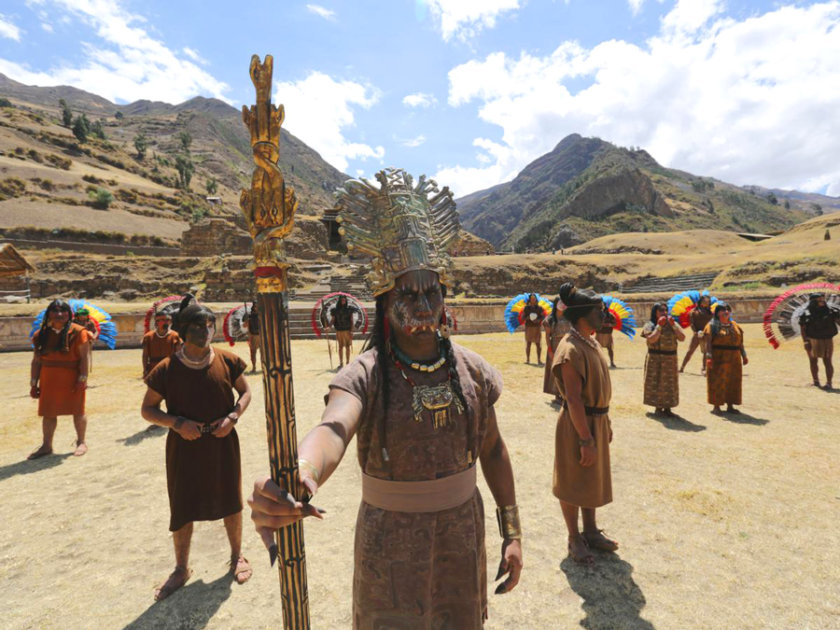
3. Querococha Lake
Located about 35 miles from Huaraz, in the heart of the Callejón de Huaylas, lies the beautiful Laguna Querococha, sitting at an altitude of 13,060 feet.
This is one of the most visited lakes in the region due to its proximity to both Huaraz and Chavín de Huántar, but don’t let that fool you—it’s truly worth a visit for the stunning views of the surrounding glaciers and snow-capped peaks.
How to visit Laguna Querococha:
- With a tour: Most full-day tours to Laguna Querococha include a visit to Chavín de Huántar and pass through charming Andean towns like Recuay, Ticapampa, and Catac. You can book the Querococha tour here!
- On your own: The lake is about 1 hour from Huaraz by car. It’s best to go in the morning, as the weather tends to turn rainy in the afternoon.
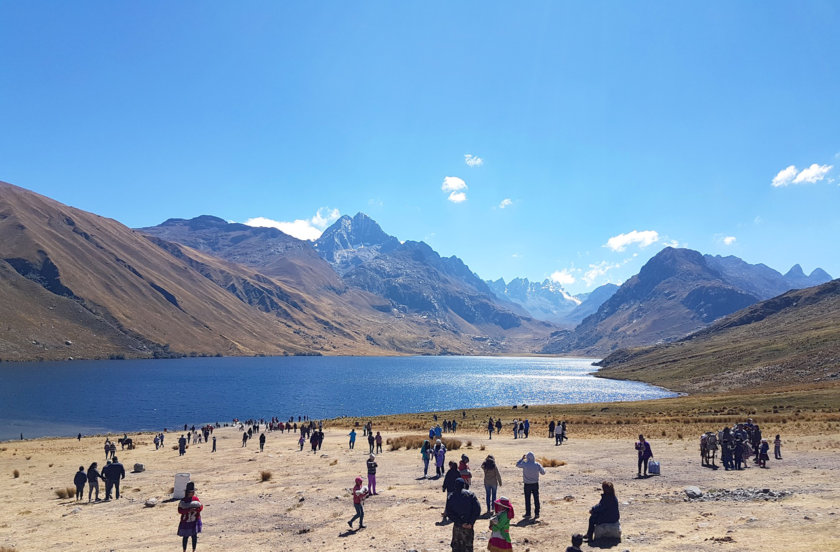
4. Honcopampa
Honcopampa is one of the most important archaeological sites in the Callejón de Huaylas.
Its origin dates back to the VII-IX centuries and it was occupied by the peoples of Recuay and Wari peoples.
Today you can still see a group of square houses with a central courtyard and some chullpas (mausoleums).
- If you take a tour to Honcopampa from Huaraz, you can also visit some artisan villages (Tarica, Pariahuanca, San Miguel de Aco, etc.), the waterfalls of Yuracyacu and the thermal baths of Chancos.
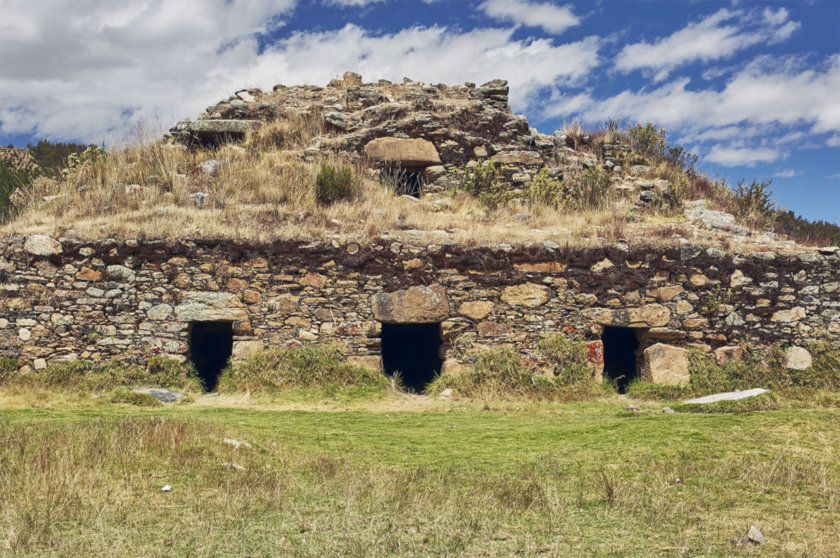
Acclimatization hikes
To get used to the altitude, it is very important that you take a day of acclimatization in Huaraz before any physical exertion, unless you are coming directly from Cusco or another high altitude destination.
For your second day, it is best to do a short hike (1/2 day or 1 day). These hikes have different levels of difficulty, some are easier than others.
The most famous in Huaraz are Laguna 69, Laguna Churup and Laguna Parón, but there are also other places to visit in Huaraz.
Here are several acclimatization hikes, from well to less-known.
5. Laguna 69
Lake 69, located in the heart of Huascarán National Park, is one of the absolute must-see places in Huaraz.
You can reach it on foot from Cebollapampa. The hike isn’t very long, but it’s physically challenging due to the altitude—you’ll climb from 12,760 to 15,090 feet, so take it slow and listen to your body.
The ascent takes around 3 hours and offers incredible views of waterfalls, valleys, and snow-capped peaks along the way.
The first half is relatively easy, but the second part gets steeper. Be sure to take breaks when needed to avoid altitude sickness.
Once you reach the top of the trail, you’ll only have about 15 minutes of flat walking left to arrive at the stunning Laguna 69, right at the base of Chacraraju Mountain.
The water might look inviting, but trust me—it’s freezing cold! Still, if you’re brave enough to try it, let me know how it goes 😉
The return hike to Cebollapampa takes around 2 to 2.15 hours.
How to get to Laguna 69:
- On your own: It’s doable, but not ideal if you’re short on time. First, take a bus from Huaraz to Yungay (around 7 soles), then another transport to Cebollapampa (about 15 soles).
- With a tour: The easiest option is to join a budget-friendly day tour from Huaraz. It includes hotel pickup, breakfast, snacks, entrance to Huascarán National Park, a stop at the Llanganuco Lakes, and free time at Laguna 69.
You can book it here:
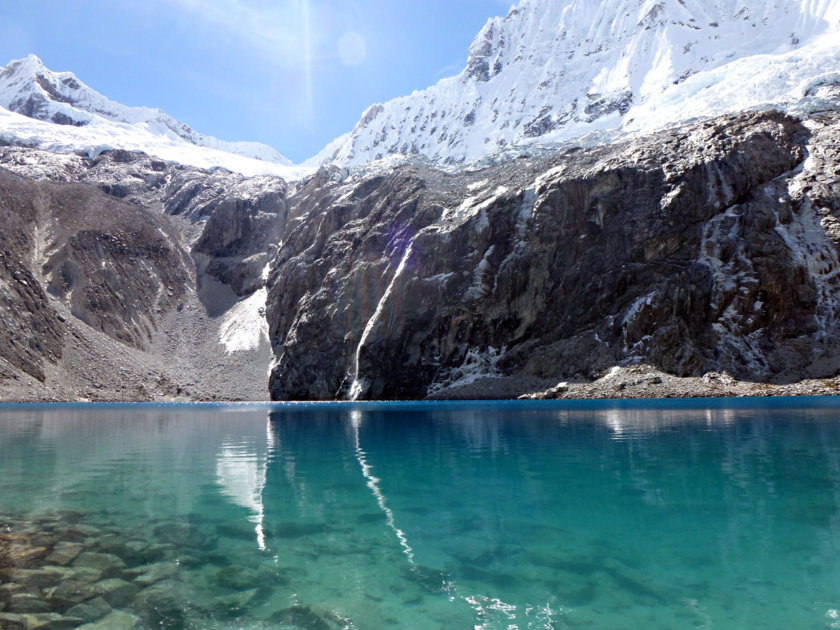
6. Llanganuco
The Llanganuco Lakes are among the top places to visit in Huaraz, offering incredible Andean scenery and tranquility.
Located within Huascarán National Park, they are made up of two glacial lakes: Chinancocha and Orconcocha, fed by meltwater from the majestic Huascarán, Yanapaccha, Pisco, and Huandoy peaks.
From the park entrance, a dirt road leads you to Laguna Chinancocha after about 30 minutes. This is the larger and more touristic of the two, and it’s possible to rent a boat or even go horseback riding around the area.
Laguna Orconcocha lies just a few minutes farther and is usually quieter, offering a peaceful spot to enjoy the views.
If you enjoy walking, I highly recommend the “María Josefa Trail”—an easy, well-marked 1h30 hike that takes you through the lush surroundings of the park. It’s especially popular for spotting native plants and flowers, including many species of orchids.
How to get to the Llanganuco Lakes:
- On your own: The lakes are about 2.5 hours from Huaraz. It’s best to go in the morning, when the sunlight gives the water its most vibrant color. First, take a combi or bus from Huaraz to Yungay, then transfer to a colectivo that goes to the lakes.
- With a tour: A much more comfortable option! You can either book a tour that includes Llanganuco and Lake 69 or opt for the Llanganuco-only day tour, which includes hotel pickup, entrance fees, and a local guide.
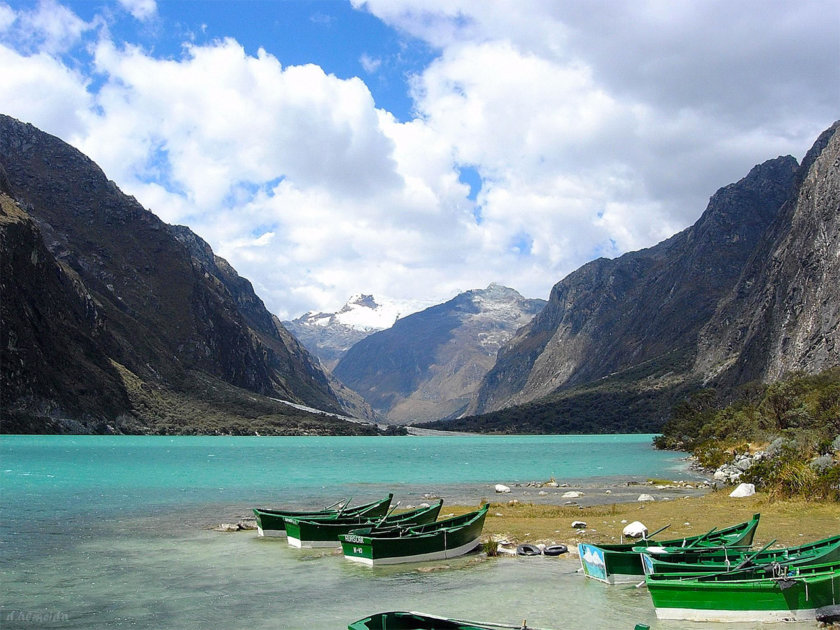
7. Churup Lake
From the village of Pitec, it takes about 3 hours of hiking, but really the challenge comes at the end of the trail with about 30 feet of rocks that you have to climb with a rope (already fixed on the wall).
At this altitude (14,600 feet), your breath runs out quickly, but behind this wall is one of the most beautiful lakes in the Cordillera Blanca with crystal clear water.
The acclimatization hike to Laguna Churup is more demanding than the previous ones (due to the altitude) and I recommend you avoid starting with it.
How to get to Laguna Churup:
- First you have to get to the village of Pitec by colectivo (40min), and then there is only one way there and back. You can also take this tour to Churup from Huaraz.
8. Paron Lake
At 14,100 feet above sea level, in the Huascaran National Park, is one of the most beautiful places to see in Huaraz: Laguna Paron.
It is much less known and touristic than Laguna 69, but it is just as beautiful (and in my opinion, even more so!).
You can walk around the lake to get to the base of the Artesonraju glacier.
I recommend going up to the lookout point (45min-1h one way) to enjoy the spectacular view and take pictures, you can also rent a kayak or a boat.
The lake is reached by a 2h30-3h hike, on an unpaved road, but accessible to cars.
You can sleep near the lake, camping (5 soles per day) or in the refuge with kitchen (20 soles).
You can rent boats from 10 soles or kayaks for 25 soles.
How to get to Laguna Parón:
- On your own: first you must go to Caraz (2h by bus from Huaraz), and then take a cab from the market in Caraz to the town of Parón (the price varies between 5 and 10 soles). If you go with a tour you will be dropped off at the lake itself, but if you go by cab you will probably be dropped off at the entrance of the road.
- With an organized tour: includes pick up from your hotel, breakfast in Carhuaz, a panoramic stop in front of the Cordillera Blanca, the visit of Marcara and Caraz known for its sweets, as well as the Paron Lake.
Book it here:
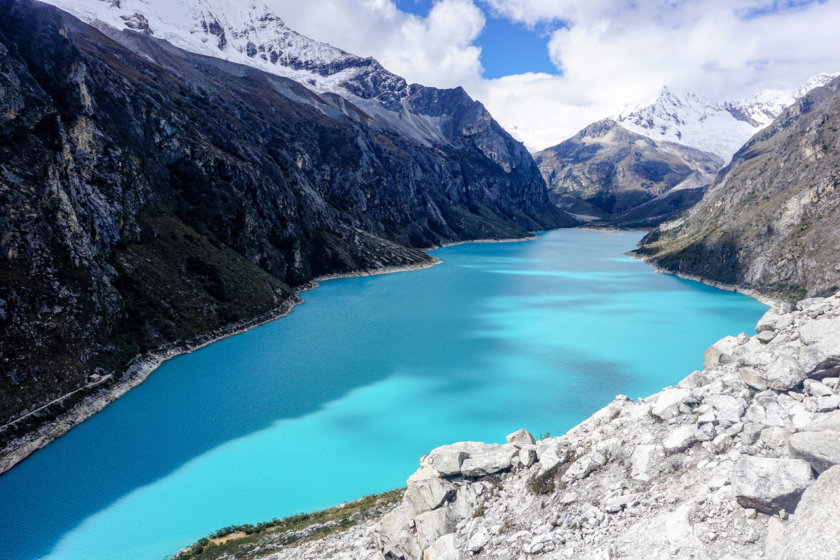
9. Wilcacocha Lake
The Wilcacocha Lake is located at 12,140 feet in the Cordillera Negra. It is a good acclimatization hike option in Huaraz and can be done very well without a guide.
The lake is not very big, but the trail is very pleasant with small rural roads, villages and fields. After about 2h30 of walking at a leisurely pace, you arrive at the lake with incredible views over the mountains of the Cordillera Blanca.
How to get to Wilcacocha:
- On your own: from Huaraz it is 15 minutes by colectivo (10 or E) to Chiwipampa, from the corner of Avenida Raymondi and Jiron Hualcan. 1-2 soles one way per person. Be careful with your schedule for the return trip because the last colectivos pass around 4:30 pm.
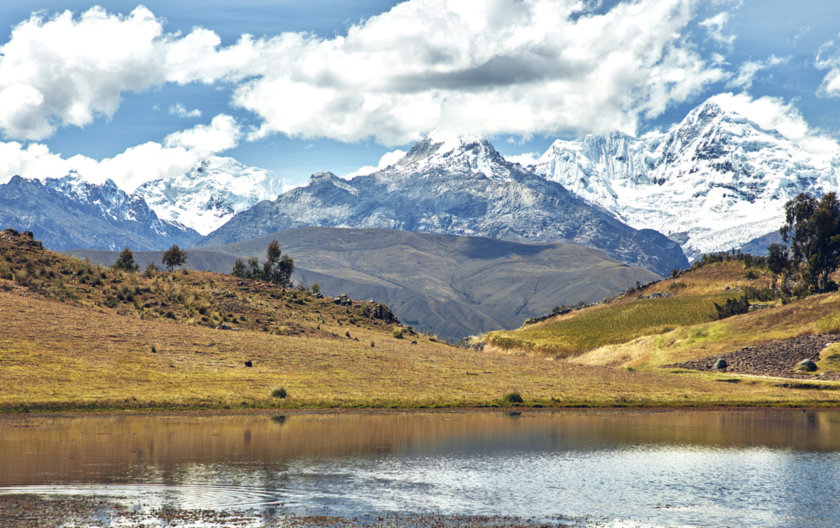
10. Radian Lake and Mullaca Lake
This is a hike off the beaten path in Huaraz that few tourists know about.
It is important to note that this is a fairly demanding hike of 15 miles with 3,940 feet of elevation gain, which will take you up to 15,120 feet.
Walking near the San Cristobal hill for about 2 hours, you will first reach Laguna Radian (12,960 feet altitude), a very quiet place with a magnificent view over the valley.
From the north side of the Laguna Radian, take the trail that follows the pre-Inca canal (1h). In the second part, the trail becomes more interesting, following the stream fed by the waters of the Laguna Mullaca (1h).
So you have to calculate about 4h-4h30 of walking from the village of Recrish to Mullaca, one of the most beautiful lakes in the region, in front of the snow-capped Vallunaraju.
How to get to the Radian and Mullaca lakes:
- You have to go to the town of Recrish (30 minutes from Huaraz), near the archaeological site of Willcahuain. You can take your combi here, 2-3 soles one way. It is a 2h walk to the Radian Lake and 2h30 to Mullaca.
11. Laguna Aguak
It is a nice hike not very touristic in Huaraz.
The hike starts 45 minutes from Huaraz, in the small town of Paria where the pre-Inca ruins of Willcahuain (or Huillcahuayín) are located.
Willcahuain was occupied by various peoples for very long periods (from before Christ to the 9th century!), but is mainly known for being an administrative center of the Huari people.
Not much remains today, but you can see the “Temple” which is a mausoleum.
From there, it takes about 3 hours of hiking on a trail surrounded by eucalyptus, conifers and shrubs to reach Lake Aguak at 16,240 feet elevation.
From the lake there is a magnificent view of Huaraz and the snow-capped peaks of the Cordillera Blanca.
How to get to Aguak Lake:
- The excursion takes one day from Huaraz, and usually includes a box lunch and entrance to Huascaran National Park.
12. Pastoruri Glacier
Pastoruri is a glacier located in the Huascaran National Park, which rises to above 17,000 feet above sea level.
It is sadly famous for having lost part of its ice cover in recent years due to climate change, so lately it is advisable not to walk on it. Of course, the views are beautiful.
It takes about 3 hours to get there from Huaraz, but the scenery is magnificent!
On the way you can admire the imposing mountains and the Puyas Raimondi, typical plants of the puna (Altiplano region between 10,500 and 15,750 feet of altitude).
The hike to Pastoruri only takes 45 min-1 hour with a small slope, but the trail is not difficult. It is especially the altitude that can be heavy.
How to get to Pastoruri:
- On your own: you will have to rent a car or some kind of mobility. Be careful that on the way you will lose the internet signal. If you do not want to take a tour, at least I recommend that you hire a guide.
- With a tour: I recommend this excursion to Pastoruri which includes pick up from your hotel in Huaraz, entrance fees and guide. You can also choose the private tour option. Book it here:

The treks of several days
I repeat: it is very important to acclimatize to the altitude.
The ideal is to take a quiet day in Huaraz and then do 2 days of short hikes, before starting these treks of several days.
Mountain sickness can cause severe nausea and headache, or worse in some cases.
If you feel very sick at any point of the hike, you must come back down, it is the only way to recover.
13. Santa Cruz (4 days)
The Santa Cruz hike is one of the best things to do in Huaraz and yet there are not many hikers on the trail – this is the advantage of being in a low tourist destination in Peru!
It is a 4 days and 3 nights trip through the Cordillera Blanca that allows you to admire a series of snow-capped mountains, small rivers and beautiful lakes.
People usually go with a guide, but you can also do it on your own since the trail is very well marked.
The disadvantage is that you have to bring everything (material, food for 4 days, etc.), but if you want you can rent a mule, it is very practical!
- How to get there on your own: take a bus to Caraz, then another bus to Cashapampa which is the starting point of the hike to Santa Cruz.
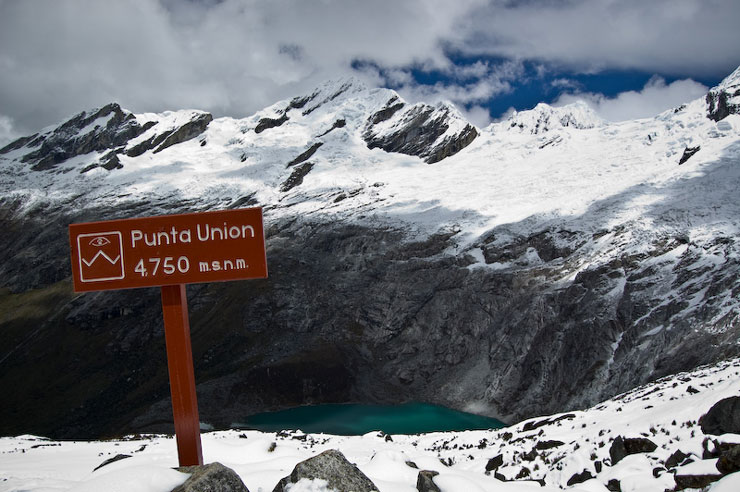
14. Huayhuash (8 to 12 days)
The Huayhuash trek is one of the most beautiful treks in the world, but also one of the most difficult in the region because it requires you to travel about 80 miles between 13,120 and 18,000 feet of altitude.
The scenery is breathtaking, with towering mountains exceeding 19,685 feet.
Along the way, we can spot the famous Andean condor, vicuñas and viscachas. Halfway along the way you can also enjoy the hot springs that offer a well-deserved dose of relaxation to the body.
There are many variants of the Huayhuash trek that are shorter than the full version. There is even a 4-day “mini” Huayhuash.
It can be done with an agency or alone, although the safest way is to do it with a guide.
- Doing the Huayhuash on your own: I recommend that you do it only if you have a good experience in high altitude and the adapted equipment. It is important to understand that this trip involves risks along the way and if something happens, you will be isolated.
- How to get to the starting point: from Huaraz, you can take a cab to Cuartelwain. Another option is to take the bus to Llamac and then walk to Cuartelwain.
15. Quilacayhuanca – Cojup (3 days)
2 hours from Huaraz, in the Huascaran National Park, is Quilcayhuanca (12,630 feet), the starting point of the trek.
The first day, the hike lasts 5 hours and ends at Tulpacocha camp.
The second day is the longest, with about 10 hours of trekking. You will pass the Cuchillacocha or Palcacocha lake, and cross the Huapi pass (16,400 feet) before arriving at Cojup camp. The third day is a 3-hour descent. Itineraries may vary significantly depending on the organization.
It is a low tourist trail in Huaraz, with views over the high mountains, waterfalls and rivers.
16. Olleros-Chavin (3 days)
This is a 3-day hike that starts in the town of Olleros, follows part of the famous Inca trail or Qhapaq Ñan, and ends at the archaeological site of Chavin. So, it is an interesting mix of landscape and culture.
Here it’s llamas instead of donkeys carrying the luggage!
17. Other hikes and activities
There are tons of things to do and see in Huaraz such as rafting on the Santa River, mountain biking in the Pato Canyon, climbing in Hatun Machay, rappelling, zip-lining, etc.
You can also do many hikes that I have not mentioned in this article:
- The trekk in the Ischinca valley (3 days) in a refugio or tent.
- The Alpamayo trek (10 days).
- The Cedro trek (9 days) which allows to cross the Cordillera Blanca.
- Trek of the Nevado de Mateo (1 day) is short, but intense because you reach a 16,900 feet height.
It’s up to you, depending on how much time you have!
Entrance to Huascaran National Park
The entrance fee to Huascaran National Park is 30 soles for 1 day, 60 soles for 2 or 3 days, or 150 soles for 4 to 30 days (per person).
Please note that the entrance fee to the park is usually not included in the tours from Huaraz.
My last tip for Huaraz: the summary
- Altitude sickness: Huaraz is one of the most beautiful destinations in Peru, with many possibilities for excursions. But, I insist, to enjoy it, you will have to foresee time to acclimatize.
- Equipment: if you do not travel with your own equipment, there are several tent-rentals (tent, sleeping bag, etc.) in Huaraz.
- What to bring: it is important that you are well prepared, with light clothes for the day, and warm clothes for the night because it can be very cold. If you go between November and March, it is also very important to bring a raincoat.
- The price of the tours: varies according to how many people join the tour. In high season it is not a problem, but in low season, you may pay a little more since there are fewer travelers or you may have to hire a private tour.
- Choose your agency carefully: there is a lot of informality in the tourism sector with little control so I recommend you always choose a recommended agency (search on TripAdvisor, for example) if you want to avoid problems with schedules, equipment, etc. Never sacrifice your safety to save some soles.
Where to stay in Huaraz?
Here are my recommendations for hotels in Huaraz, for all budgets:
- Kame Hous Hostel: A cozy youth hostel run by a host who knows everything about Huaraz and its treks. It has access to a fully equipped kitchen, a fireplace, a great atmosphere, and amazing views of the snowy peaks from the rooftop. Dorms from just $6.50 USD and private rooms from $16 USD.
- Hotel & Bungalows Villa Valencia: If you’re looking for more comfort and tranquility, this lovely white hotel features a garden, BBQ area, pool table, and a bar. From only $41 USD per night!
- The Lazy Dog Mountain Lodge: A charming countryside-style lodge where you can relax by the fireplace, enjoy the Finnish sauna, and take in panoramic views of the Cordillera Blanca and Cordillera Negra. The restaurant serves meals made with fresh local ingredients grown in their own garden. From $115 USD per night
What is the weather like in Huaraz?
In the highlands it can be hot during the day and very cold at night.
In the rainy season (November to April) the temperature is around 51.8F. March is the rainiest month. But it usually only rains in the afternoon, and in the morning you can enjoy the sun.
In dry season (May to October), which represents summer in the Andes, the temperature is around 59F. Rainfall is practically non-existent between June and September.
When to go to Huaraz?
The best time to visit Huaraz is from April to October to avoid the rainy season which is from November to mid-April.
How long to visit Huaraz?
Most travelers spend 3 days and 2 nights in Huaraz, often arriving on the night bus from Lima to maximize their time.
If you’re short on time, 3 days is the minimum I recommend—this allows for 1 day to acclimatize to the altitude and at least 2 full days of hiking or day tours.
However, there are so many great trails and day trips in the area that the ideal would be to stay a full week in Huaraz to explore at a relaxed pace and enjoy everything the region has to offer.
If you’re planning a multi-day trek (like Santa Cruz or Huayhuash), it’s best to start it on your 3rd or 4th day, once your body has had time to adjust to the altitude.
What to bring to Huaraz?
Light clothes for the day and warm clothes for the night.
If you go during the rainy season (November to April) don’t forget to bring a raincoat.
You will easily find stores that rent all the equipment you will need.
Also bring water, sunscreen and good sunglasses as the sun is very strong at this altitude.
How to get to Huaraz?
- By bus: buses leave Lima every day (ex: Cruz del Sur, Movil Tours, Civa) and the trip takes 8 hours. If you don’t want to waste a day on the bus, there are also night buses.
How to get from Lima to Huaraz by car?
There are several routes to go from Lima to Huaraz, but I recommend the shortest and most known (250 miles in 6h-6h30).
From Lima, take the Panamericana Norte (1N) to the Pativilca turnoff, then continue east to Conococha (16), take the highway (3N) to Huaraz.
You can also continue north on the Panamericana Norte (1N) to Casma and then take highway (14) to Huaraz, but that’s a good 60 extra miles!
You have to be aware that it is an area with many curves (especially in the Pativilca – Conococha stretch), so if you don’t feel very comfortable it is better to go by bus.
Do you want to rent a car in Peru?
If you’re planning to drive to Huaraz or explore the surrounding areas, you’ll need a reliable car—preferably a 4×4—suitable for the cold climate and unpaved mountain roads.
Renting a car is one of the best ways to explore Peru independently and get the most out of your trip, especially if you enjoy off-the-beaten-path adventures.
Personally, I always use Booking.com Cars to rent vehicles in Peru, and here’s why:
- Easily compare prices from all major rental agencies in one place—finding the best deal has never been easier!
- Free cancellation on most bookings, so you can reserve with peace of mind.
- Better insurance coverage at a lower price than rental companies—saving you money with no extra effort.
Click the button below to find the best car rental deals in Peru:
Book Your Flight at the Best Price
Planning a trip to Peru? To get the best deal on your flights, I recommend using this flight comparison tool, in partnership with Skyscanner.
It’s the easiest way to find the lowest prices for both international flights and domestic flights within Peru—ensuring you pay the best rate with no hassle!
Rent a car
Book entrance tickets and guided visits
Take a travel insurance
Book a tour
✈️ Book your flight
Traveling to Peru? These articles will help you!
Discover all my articles about Peru: All my tips and itineraries to plan your trip in one place!
40 EPIC Things to Do in Peru (+ My Best Tips)
- Itinerary: 5-6 days in Peru – Lima, Arequipa, Colca Canyon, Cusco, Sacred Valley and Machu Picchu
- Itinerary: 7-8 days in Peru – See the maximum in one week
- Itinerary: 10 days in Peru – The ideal itinerary for a short stay in Peru
- Itinerary: 2 weeks in Peru – The classic route
- Itinerary: 15 days in Peru – An itinerary that includes northern Peru
- Itinerary: 3 weeks in Peru
- Itinerary: 3 weeks in Peru + Bolivia – The best itinerary for visiting both countries
- Itinerary: 1 month in Peru – What to see and do in 30-31 days
You’re using Pinterest? Here is the picture to pin!
